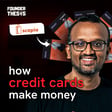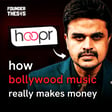
Priyanka Salot reveals the science of D2C brand-building | The Sleep Company
"We were not building a short term new age brand, we were building a very disruptive new age product. But we wanted to build a legacy brand."
Priyanka Salot shares a powerful insight: The Sleep Company isn't just chasing trends; they're building a lasting brand with a revolutionary product, focusing on long-term impact and customer loyalty over quick wins.
Priyanka Salot is the Founder of The Sleep Company, India's leading comfort-tech company revolutionizing sleep and sitting experiences. Before founding the sleep company, Priyanka has worked with P&G, handling legacy brands like Ariel, Tide and Pampers. A marketing expert, Priyanka did her engineering and MBA, post which she spent almost a decade in consumer marketing. With their patented Smart Grid technology, The Sleep Company has grown to a ₹450 Cr+ ARR business, opening experience stores across India, and securing patents globally. Priyanka's vision is to make India, and eventually the world, sleep and sit better.
Key Insights from the Conversation:
- Product-Market Fit: Prioritizing a truly differentiated product (Smart Grid) over a quick launch, spending 2 years in R&D.
- Customer-Centricity: Deeply listening to customers through multiple channels (reviews, surveys, direct conversations) and using feedback to pivot (e.g., launching Ergo Smart chairs).
- Omnichannel Excellence: Combining online discovery with offline experience centers for a seamless customer journey.
- Brand Building as a Science: A disciplined approach to branding, emphasizing consistent assets and a clear brand persona (science-backed).
- Sustainable Growth: Focusing on profitability and efficient marketing spend to build a long-term, financially healthy business.
- Controlling the Supply chain: In-house manufacturing, enabling quality control, customisation, and faster delivery.
Chapters:
- (00:01:10) Origin Story: From Sleepless Nights to Startup Idea
- (00:04:52) Two Years of R&D: Why Product Superiority Matters
- (00:07:52) SmartGRID Technology Explained: The Science of Sleep
- (00:17:17) Brand Building as a Science: Consistency is Key
- (00:24:39) Listening to the Customer: From Feedback to Flywheels
- (00:36:44) Strategic Funding & Growth: Finding the Right Partners
- (00:51:17) Marketing in the Digital Age: Finding Your Customer
- (00:59:51) Omnichannel Strategy: Bridging the Online-Offline Gap
- (01:05:13) Vertical Integration: Controlling the Customer Experience
- (01:09:33) The Future: Global Ambitions & Customer Obsession
Hashtags:
#TheSleepCompany #PriyankaSalot #FounderThesis #StartupIndia #Entrepreneurship #MattressIndustry #ComfortTech #SmartGrid #DirectToConsumer #D2C #Omnichannel #BrandBuilding #MarketingStrategy #CustomerExperience #Innovation #MadeInIndia #BusinessGrowth #VentureCapital #StartupJourney #FounderStories #ErgoSmart #SleepBetter #SitBetter #BusinessPodcast #IndianStartups #PriyankaSalotInterview



















